
Every jīva’s characteristics and circumstances differ from one another. Therefore every one’s dharma is different. Thus everyone has his or her own svadharma.
For a kṣatriya, fighting a war for dharma becomes dharma. Therefore, it was Arjuna’s duty. Not Vyāsa’s. Accepting five husbands became dharma for Draupadī; not for any other woman. It became dharma for Ambikā and Ambālikā to seek offspring from their own brother-in-law; not for other women...

Dharma is a word not used just by the vaidikas but also employed reverently by the Buddhists and Jains. The vaidikas have employed this term in different śāstras and as part of different terminologies. Śrī Śaṅkara gives the following meaning:
jagataḥ sthiti-kāraṇam। prāṇināṃ sākṣād-abhyudaya-niḥśreyasa hetuḥ yaḥ sa dharmaḥ...
Śāṅkara-gītā-bhāṣya upodghāta
The system and set of acts that bestows
(i) Welfare upon beings in the world now and
(...

The Self Cannot be Destroyed
Arjuna, there are two substances in this world – the body and the embodied. The body is a thing that is known directly to everyone. It comprises not only physical organs but also inner organs such as the mind and intellect and also the remnants of karma and vāsanas (latent impressions) that have been accumulated over several lives. These are the characteristics of a jīva. All subtle ingredients other than the Self...
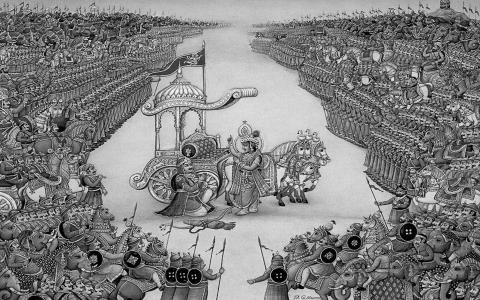
It may be apt to recall the maxim of the English philosopher John Stuart Mill. It is not enough if one person forms an opinion or follows a certain set of actions because of faith in the words of others’ words. One should yearn to understand the exact reasons why a certain thing is good through one’s own analysis. Then the thing becomes truly beneficial. A belief that arises from blind faith may not be as fruitful.
The same words are stated by...
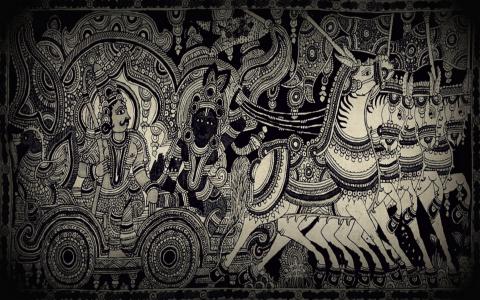
The Beginning of the Instruction
The second chapter of the Gītā has four main aspects.
The remainder of the first chapter’s topic, i.e. Arjuna’s words of abandoning battle.
Propounding the eternal nature of the Self (ātmā)
The necessity of performing one’s own dharma
The nature of the knower of reality
Let us look at this one by one.
Arjuna’s Wish to Give Up
The story of Arjuna’s depression continues in the first nine verses. When Arjuna...

Terminology
[Continued]
7. Kāla-Deśa – See Deśa-Kāla.
8. Deśa-Kāla (Space-time) – The ideas of size and duration that emerge in our minds through the experience of various objects and actions. Both deśa and kāla are expressions of the existence of the world. The world is an aggregate of things and actions. The word deśa (or dik - direction) indicates the shape and size of objects in the world and their mutual relationships. The word kāla...

Gist
ಸ್ಮಿತದಿಂ ಸೌಹೃದವೀಕ್ಷಾ-
ಮೃತದಿಂ ಫಲ್ಗುಣನ ಸಂತವಿಡುತವನುಲಿದಾ
ಮತಿಮೋಹವ ನೀಗುವ ಜೀ-
ವಿತತ್ತ್ವವ ಪಾಡಿದಂ ಜಗದ್ಗುರು ಕೃಷ್ಣಂ || 1 ||
With a smile and a nectar-like glance of friendship,
the world-teacher, Kṛṣṇa, sang the essence of life,
curing Phalguṇa’s (Arjuna’s) mind delusion
that caused him to utter words of unhappiness.
ಅವಿಚಾರದ ಕೃಪೆಯೇಂ ತ-
ತ್ತ್ವವಿಮರ್ಶಾಧಾರಮಿರದ ಧರ್ಮಾಸ್ಥೆಯದೇಂ
ಸವಿಷಾದ ವಿರಕ್ತಿಯದೇಂ
ನವಕುಸುಮಾಸ್ತರಣಗುಪ್ತಗರ್ತಂ ಸುಖಮೇಂ || 2 ||
What is...
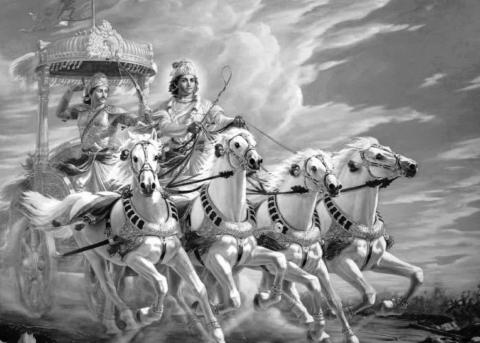
The fault of Arjuna’s compassion is not just that it was indiscriminate and unexamined. It was mixed with ego. The self-delusion that he was responsible for deciding the nature of his dharma, that the others were fit for compassion, that the decision to fight the war was out of his own free will (see BG 18.58–59) was included in it.
Among the various forms of human relationship, compassion is indeed great. There are very few people in the world...
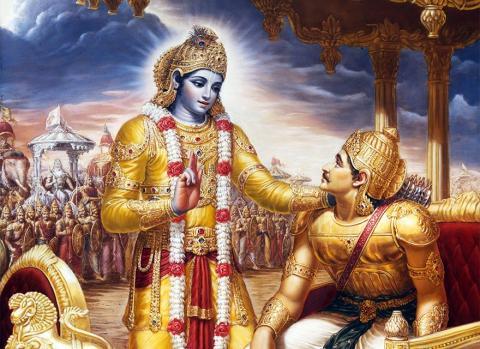
It is claimed often that ours is an Age of Science, an era of intellectual superiority. On the one hand, the intellect is mighty but on the other hand, the mind is fragile. Our times despise difficulties. Let nothing be difficult, may everything be easy – a piece of cake – this is today’s mindset.
This starts in our schools. Indian languages have the letters cha, bha, kṣa, hra – who needs these letters? They weary the children.
Let us not...
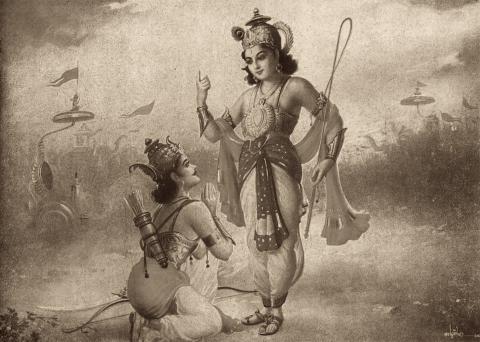
At this point, as an example of the severity of the result of one’s own experience, we can recollect the episode of the blind king Dhṛtarāṣṭra. Vyāsa offered to give him the capability to witness the scenes in the battlefield.
yadi tv-icchasi saṅgrāme draṣṭum-enaṃ viśāmpate।
cakṣur-dadāni te hanta yuddham-etan-niśamaya॥
(Bhīṣma-parva 2.6)
Dhṛtarāṣṭra replied –
na rocaye jñāti-vadhaṃ draṣṭuṃ brahmarṣi-sattama।
yuddham-etat-tv-aśeṣeṇa śṛṇuyāṃ...
